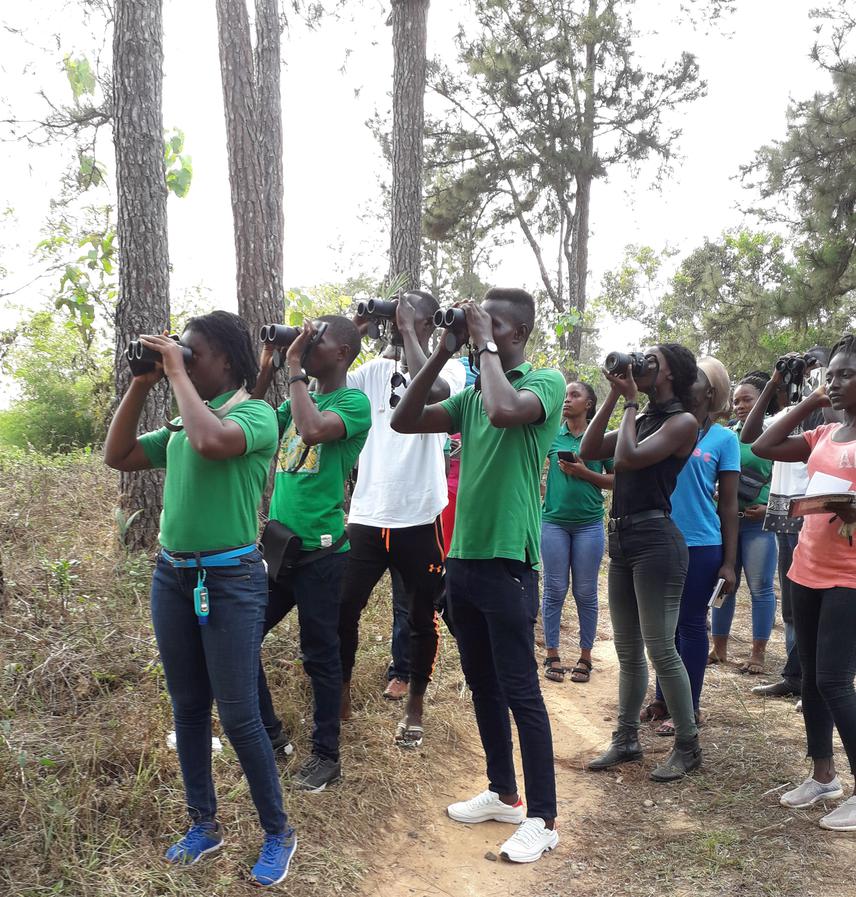Clara Naomi Cassell
The project aims to:
- provide the means for future influencers of conservation to gain an awareness of form ties with, and positively interact with biodiversity
- remove a limiting factor for participation of local people in a continent-wide citizen science project through the provision of equipment and access to people with similar interests
- increase the number of people who record birds and biodiversity and though this create a more up-to-date and complete picture of Liberia’s bird life
- increase the coverage of the Liberian Bird Atlas outside of Monrovia, where natural areas have been less affected by human activities and where most information is currently irregularly obtained over time
- start building a culture of observation and research amongst science students

The project will provide support for the African Bird Map in Liberia, by introducing students of science and forestry to the concept of bird atlas and providing them with the means to participate. The project is based on the expectation that people, particularly the students being engaged, are interested in nature and biodiversity, but lack tools and information to productively act on that interest. It is our aim to increase knowledge of the natural areas of Liberia and people’s perceptions of them.
Our activities will provide information through seminars and printed materials; equipment such as binoculars, bird guides, and telescopes; guidance in the form of check-ups and encouragement; and basic training in the identification of common birds and tips towards increasing bird identification skills. This support will be maintained over time through continued engagement to nurture interest and build skills in biodiversity observation and recording. At each of the target institutions, we will encourage the formation of bird clubs which can function alone, and establish communication platforms for students to learn about birds and conservation while simultaneously ensuring that participants have a link to the larger project. The project will showcase the importance (and intrigue) of birds to the students and increase their conservation awareness, using bird watching sessions as learning tools. Students will be encouraged to discuss and learn about birds and nature in general and build their capacity as local specialists and researchers. Over time, as these students disperse across Liberia into their different careers and roles, this awareness of biodiversity can provide some influence on their interaction with others and with the environment. From this interest, and over the coming years, we would increase what we know about local bird life and biodiversity. Information generated by this project could ultimately contribute to an updated Birds of Liberia book. More focused events can over time provide information for species groups, enable the monitoring of changes in bird migration ecology and timing, increase data on the range, behaviour, and habitat use of understudied/data-deficient species or those with shifting ranges in response to climate change, and supply information on the illegal trade of bird species.